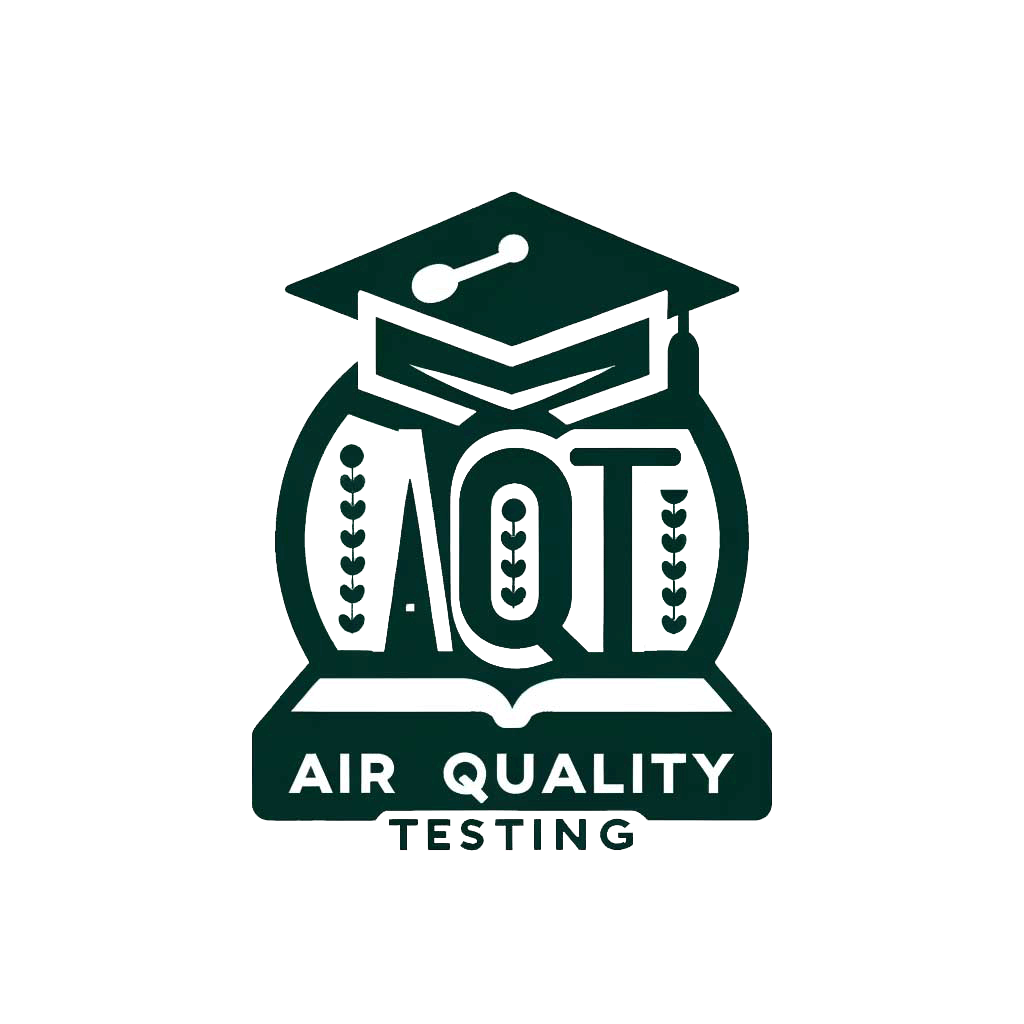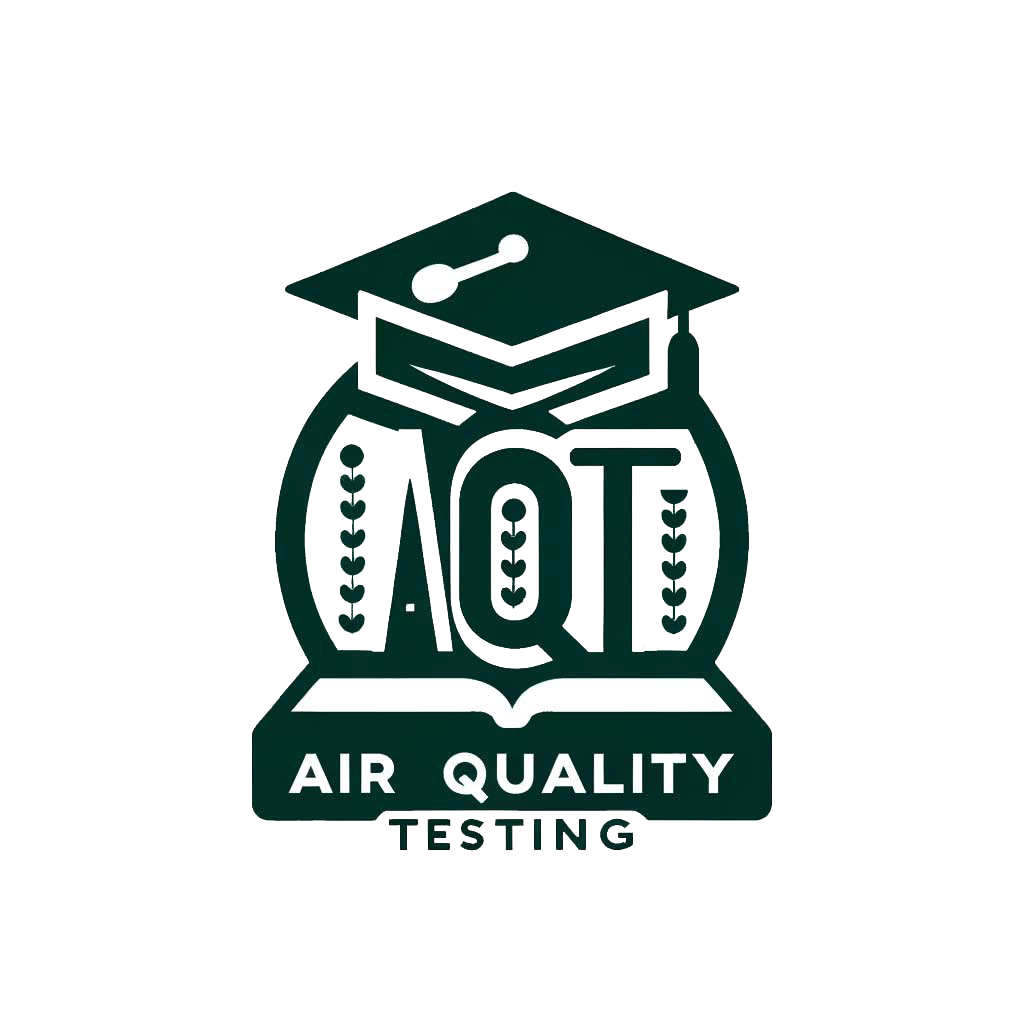
Taking Action
Testing for Control
In the quest to improve indoor air quality, testing plays a pivotal role by providing the crucial data needed to make informed decisions. Air quality testing is more than a diagnostic tool; it’s a means to regain control over the unseen elements that affect our health and well-being. This section delves into how testing for indoor air pollutants empowers individuals, families, and communities to identify and mitigate sources of air pollution, safeguarding health and enhancing the quality of living spaces.
Empowerment through Measurement
- Identify Pollutant Levels: The first step in tackling indoor air pollution is understanding what you’re up against. Air quality tests measure the concentrations of various pollutants, including particulate matter (PM), volatile organic compounds (VOCs), carbon monoxide (CO), and radon. Knowing the levels of these pollutants can help pinpoint specific problems and their sources.
- Source Identification: Once pollutants have been identified, targeted testing can help trace them back to their sources. Whether it’s a malfunctioning HVAC system, high levels of radon from the ground, or emissions from household products, identifying the source is crucial for effective mitigation.
Data-Driven Decisions
- Prioritize Actions: Testing results enable homeowners and facility managers to prioritize remediation efforts based on the severity and health risks of identified pollutants. This strategic approach ensures that resources are allocated efficiently, addressing the most pressing issues first.
- Evaluate Mitigation Strategies: Post-remediation testing can assess the effectiveness of measures taken to reduce pollutant levels. This feedback loop is essential for continuous improvement, helping to refine strategies until indoor air quality meets health and safety standards.
Building a Healthier Environment
- Health Protection: By identifying and mitigating indoor air pollutants, testing helps protect the health of occupants. Reducing exposure to harmful pollutants can decrease the risk of respiratory problems, allergies, and other health issues.
- Preventative Measures: Regular air quality testing can also serve as a preventative measure, identifying potential problems before they escalate into health hazards. This proactive approach contributes to a healthier indoor environment, benefiting everyone who occupies the space.
Community Impact
- Educating and Empowering Communities: Sharing the results and lessons learned from air quality testing can educate and empower entire communities. Awareness campaigns and community projects based on testing data can promote actions that lead to broader improvements in air quality.
- Policy and Advocacy: On a larger scale, aggregated data from air quality tests can inform policy decisions and advocacy efforts aimed at reducing indoor and outdoor air pollution. This collective action has the potential to create healthier living conditions for all.
Testing for indoor air quality is a powerful step toward understanding and controlling the environment in which we live and breathe. It provides the knowledge needed to take action, offering a clear path to healthier indoor spaces. Through informed decision-making and community engagement, testing for control is a cornerstone of efforts to ensure air quality that supports human health and environmental well-being.
Making Informed Decisions
The cornerstone of enhancing indoor air quality and safeguarding health lies in the ability to make well-informed decisions. Air quality testing provides a wealth of data that serves as a guide for individuals, families, and communities to understand their environment better and take decisive actions toward improving it. This section explores how the insights gained from air quality testing can lead to transformative changes in our living spaces, ultimately protecting our health and enhancing our quality of life.
Insight into Air Quality
- Understanding the Environment: Air quality testing sheds light on the specific pollutants present in your home environment, their concentrations, and potential sources. This detailed understanding is crucial for identifying the right solutions to improve air quality effectively.
- Recognizing Risks: By pinpointing the types of pollutants and their levels, testing data helps assess the health risks they pose. This risk assessment is vital for households with vulnerable individuals, such as children, the elderly, or those with pre-existing health conditions, enabling proactive measures to protect those most at risk.
Strategic Interventions
- Customized Solutions: Armed with specific data on air pollutants, homeowners can implement targeted interventions. Whether it’s upgrading filtration systems, adjusting ventilation, or removing the sources of pollutants, actions can be prioritized based on their potential impact on air quality.
- Evaluating Effectiveness: Post-intervention testing offers feedback on the measures taken, allowing for adjustments and fine-tuning. This iterative process ensures that efforts to improve air quality are effective and resources are used efficiently.
Health and Well-being
- Preventive Health Care: Knowledge from air quality tests can be transformative for health, guiding actions that prevent exposure to harmful pollutants. Reducing levels of particulate matter, VOCs, and other pollutants can decrease the risk of respiratory conditions, allergies, and other health issues.
- Enhanced Living Conditions: Improvements in air quality contribute to a more comfortable and healthier living environment. Cleaner air can lead to better sleep quality, improved concentration, and overall well-being.
Empowerment Through Knowledge
- Informed Decision-Making: The data from air quality tests empower individuals to make informed decisions about their living environments. This empowerment leads to a more proactive approach in managing indoor air quality, with a clear focus on health and wellness.
- Community Awareness and Action: Sharing knowledge and experiences related to air quality testing can inspire community-wide actions. Education and awareness campaigns based on real data can drive collective efforts to improve air quality, both indoors and in the broader community.
Air quality testing is more than a diagnostic tool; it is a catalyst for change. By providing detailed insights into the state of our indoor environments, it empowers us to make informed decisions that significantly impact our health and the quality of our living spaces. Through strategic interventions, continuous evaluation, and a commitment to health and well-being, we can transform our homes into havens of clean air and safety.
Empowering Communities
Empowering communities to take collective action for cleaner air is a pivotal step towards a healthier environment for everyone. By leveraging data from air quality testing, communities can unite to advocate for and implement strategies that significantly reduce air pollution. This section delves into how shared information and collaborative efforts can drive impactful changes, leading to improved air quality on a broader scale.
Collective Awareness and Action
- Shared Understanding: Air quality testing data can serve as a powerful tool for raising awareness about the state of the environment and the specific challenges a community faces. By understanding the types and sources of pollutants affecting a community, residents can come together to address these issues more effectively.
- Community-Based Solutions: Armed with data, communities can identify targeted solutions that address their unique air quality challenges. This might include planting more green spaces, advocating for cleaner transportation options, or implementing local regulations to limit industrial emissions. Such actions, grounded in empirical evidence, have a greater chance of success and community buy-in.
Informed Policy Advocacy
- Data-Driven Decision Making: Communities can use air quality data to advocate for policy changes at the local, state, and national levels. By presenting clear, evidence-based arguments, residents can push for legislation and regulations that prioritize air quality improvements, such as stricter emissions standards or investment in renewable energy sources.
- Community Representation: Engaging with policymakers and participating in public forums allows communities to voice their concerns and propose solutions based on real-world data. This participatory approach ensures that the needs and health of the community are considered in policy decisions, leading to more effective and equitable outcomes.
Building Healthier Environments
- Public Health Initiatives: Communities can initiate public health campaigns focused on mitigating the effects of air pollution. By educating residents on how to protect themselves from poor air quality, promoting health screenings, and supporting vulnerable populations, communities can enhance overall resilience to air pollution.
- Sustainable Development: With a solid understanding of air quality issues, communities can pursue development projects that prioritize sustainability and minimize environmental impact. This might involve adopting green building practices, enhancing public transportation networks, or supporting local initiatives that contribute to cleaner air.
Strengthening Community Bonds
- Unified Efforts: Working towards the common goal of cleaner air strengthens community bonds, fosters a sense of belonging, and builds collective resilience. When communities come together to tackle environmental challenges, it not only leads to tangible improvements in air quality but also enhances social cohesion and community well-being.
- Empowerment Through Engagement: Active involvement in air quality improvement initiatives empowers residents, giving them a sense of agency and a voice in shaping their environment. This empowerment can spark further engagement in community activities and decision-making processes, creating a virtuous cycle of involvement and improvement.
Empowering communities through collective action and informed policy decisions creates a powerful force for change, driving significant improvements in air quality. By harnessing the insights provided by air quality testing, communities can advocate for sustainable practices, implement effective solutions, and foster an environment where clean air is a shared priority, benefiting everyone.
frequently asked questions
How does the number of occupants in a home or building impact indoor air quality and duct cleaning frequency?
The number of occupants significantly affects indoor air quality, with more people leading to faster dust and allergen accumulation. Duct cleaning frequency should be adjusted accordingly.
How does family living, especially with children and pets, affect the need for more frequent duct cleaning?
Families with more occupants, children, and pets might need to consider duct cleaning every 2-3 years to maintain healthy indoor air quality.
In multi-family buildings like condominiums, what factors influence the frequency of duct cleaning?
Centralized HVAC systems in multi-family buildings can accumulate pollutants faster. Building management should consider annual inspections and more frequent cleaning to ensure optimal air quality.
What frequency of duct cleaning is advisable for homes with shared housing arrangements, such as renters or extended family?
Homes with shared living situations might benefit from annual or bi-annual duct cleaning to manage increased activity and maintain a healthier environment.
Why do office buildings with a higher number of employees often require more frequent duct cleaning?
Increased occupancy in office buildings leads to greater air quality challenges due to activity and equipment use. They generally require more frequent cleanings.
What is the recommended duct cleaning frequency for high-traffic commercial spaces like retail stores or restaurants?
High-traffic commercial spaces often need quarterly or bi-annual duct cleaning to ensure a healthy environment and comply with health standards.
Why might schools and educational institutions consider yearly or seasonal duct cleaning?
Schools, with their high occupancy of children susceptible to respiratory issues, may benefit from yearly or seasonal duct cleaning to maintain a healthy learning environment.
How does the seasonal nature of rentals impact duct cleaning frequency?
Properties rented out seasonally may require duct cleaning after a high-traffic rental season to ensure good air quality for the next group of renters.
Why is it crucial to consult with professional duct cleaning services when determining cleaning frequency based on occupancy levels?
Professional services can assess specific conditions and provide expert guidance on the most appropriate cleaning schedule tailored to your situation.





